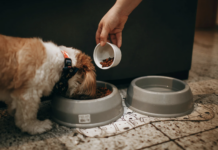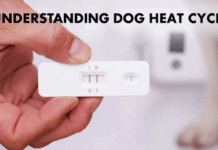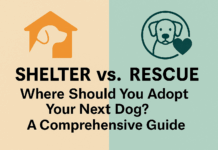Last Updated on July 30, 2024 by Dogs Vets
As pet parents, we’re committed to providing the best care for our furry companions, and that includes optimizing their sleeping area for maximum comfort. From orthopedic support to luxurious accessories, there are numerous ways to enhance your dog’s sleeping space.
In this comprehensive guide, we’ll delve into tips and accessories to ensure your canine friend enjoys the ultimate relaxation in their sleeping zone, incorporating insights on popular products like the Bingopaw dog bed and a Bedsure Comfy Pet Bed review.

Invest in Quality Bedding:
1. The cornerstone of your dog’s sleeping area is undoubtedly their bed. Opting for a high-quality bed, such as an orthopedic dog bed, can provide exceptional support, particularly for senior dogs or those with joint issues. The Bingopaw dog bed stands out in this regard, designed with orthopedic features that offer both comfort and support.
Its memory foam construction molds to your dog’s body, relieving pressure points and promoting better sleep quality. Investing in a Bingopaw dog bed ensures your furry friend wakes up refreshed and ready for the day ahead.
Add Soft Blankets and Pillows:
2. Elevate the coziness of your dog’s bed by layering it with soft blankets and pillows. Not only do these accessories add extra warmth, but they also provide a sense of security and comfort for your pet.
Consider incorporating a Bedsure Comfy Pet Bed into the mix, renowned for its plush materials and durability. A Bedsure Comfy Pet Bed review often highlights its ability to maintain shape and softness even after multiple washes, making it a favorite among discerning pet owners.
By adding these soft accessories, you create a luxurious sleeping environment that your dog will love to snuggle into.
Provide Temperature Control:
3. Just like humans, dogs have preferences when it comes to temperature. During colder months, ensure your dog’s sleeping area is adequately heated, either through central heating or by adding a heated pet bed.
Conversely, in warmer weather, provide cooling options such as a breathable bed or a fan nearby to prevent overheating. By maintaining a comfortable temperature, you can ensure your dog enjoys uninterrupted sleep throughout the year, regardless of the weather outside.
Incorporate Calming Scents:
4. Aromatherapy can have a soothing effect on dogs, promoting relaxation and better sleep quality. Consider using lavender or chamomile scents in the form of sprays or diffusers near your dog’s sleeping area.
These natural scents have been shown to reduce anxiety and stress in dogs, creating a calm and serene environment conducive to restful sleep. However, be mindful of your pet’s sensitivities, and always choose pet-safe products to ensure their well-being.
Regular Cleaning and Maintenance:
5. To maintain a hygienic and inviting sleeping area for your dog, it’s essential to regularly clean their bedding and accessories. Wash blankets, pillows, and bed covers frequently to remove dirt, hair, and odors.
Additionally, inspect the bed for any signs of wear and tear, and replace it as needed to ensure continued comfort and support for your furry friend. By incorporating regular cleaning and maintenance into your routine, you can prolong the lifespan of your dog’s bedding and ensure they always have a clean and comfortable space to rest.

FAQs:
Q1: How often should I replace my dog’s bed?
A1: It’s recommended to replace your dog’s bed every 1-2 years, depending on the wear and tear. Signs that indicate it’s time for a new bed include flattened padding, visible damage, or a lingering odor that persists despite cleaning.
Q2: Can I wash my dog’s bed in the washing machine?
A2: Many dog beds, including the Bingopaw dog bed and Bedsure Comfy Pet Bed, come with removable covers that are machine washable. Always refer to the manufacturer’s instructions for specific washing guidelines to ensure longevity and maintain the bed’s integrity.
Q3: How can I make my dog’s sleeping area more inviting?
A3: Adding soft blankets and pillows, incorporating calming scents, and providing temperature control are effective ways to enhance your dog’s sleeping area. Additionally, consider placing the bed in a quiet and cozy corner of your home, away from high-traffic areas and loud noises, to create a peaceful retreat for your furry friend.
Conclusion:
Creating an optimal sleeping area for your dog requires a combination of thoughtful accessories and attention to their individual needs. Whether it’s providing orthopedic support with a Bingopaw dog bed, adding luxurious blankets and pillows, or incorporating calming scents, there are numerous ways to enhance your pet’s comfort.
By investing in quality bedding, maintaining a comfortable temperature, and incorporating soothing elements, you can ensure your furry friend enjoys peaceful and restorative sleep every night. Remember, a well-rested dog is a happy and healthy dog, so prioritize their comfort and well-being in their sleeping area.
Fact Check
We strive to provide the latest valuable information for pet lovers with accuracy and fairness. If you would like to add to this post or advertise with us, don’t hesitate to reach us. If you see something that doesn’t look right, contact us!

















